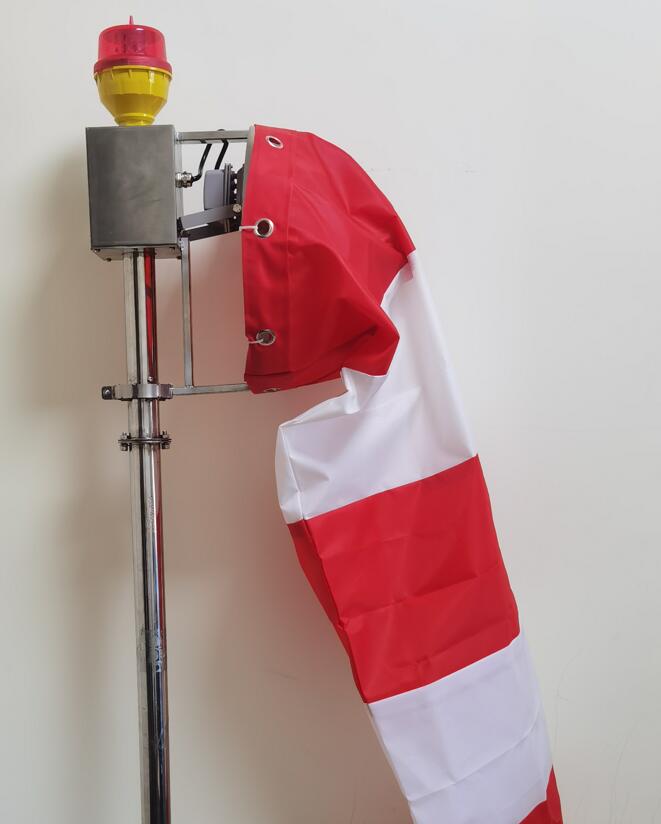Windcone Essentials: A Guide to Functionality and Importance in Aviation
In the realm of aviation, safety and precision are paramount. One of the most critical yet often overlooked tools in ensuring safe takeoffs and landings is the windcone, also known as a windsock. This simple yet highly effective device provides pilots with real-time information about wind direction and speed, which is essential for safe aircraft operations. This article explores the functionality, applications, and significance of the windcone in aviation and beyond.
1. What is a Windcone?
A windcone is a conical textile tube designed to indicate wind direction and relative speed. It is typically mounted on a pole or mast and is commonly found at airports, heliports, and other locations where wind conditions are critical. The windcone’s orientation and inflation level provide visual cues to pilots, helping them make informed decisions during takeoff, landing, and taxiing.
2. Key Features of a Windcone
Durable Material: Windcones are made from high-quality, weather-resistant fabrics such as nylon or polyester, ensuring they can withstand harsh environmental conditions.
Visibility: Bright colors like orange and white are commonly used to make windcones easily visible from a distance, even in low-light conditions.

Design: The conical shape allows the windcone to respond quickly to changes in wind direction and speed, providing accurate and real-time information.
Size Variations: Windcones come in various sizes, with larger ones used at major airports and smaller versions for heliports or private airstrips.
3. How Does a Windcone Work?
The windcone operates on a simple principle: it aligns itself with the wind direction and inflates proportionally to the wind speed. Here’s how it works:
Wind Direction: The windcone points in the direction the wind is blowing. For example, if the wind is coming from the north, the windcone will point south.
Wind Speed: The degree of inflation indicates wind speed. A fully inflated windcone suggests strong winds, while a partially inflated one indicates lighter winds.
4. Importance of Windcones in Aviation
Windcones play a crucial role in aviation safety for several reasons:
Pilot Guidance: They provide pilots with immediate visual information about wind conditions, which is essential for safe takeoffs and landings.
Runway Selection: At airports with multiple runways, windcones help air traffic controllers and pilots choose the most appropriate runway based on wind direction.
Heliport Operations: For helicopters, which are highly sensitive to wind conditions, windcones are indispensable for ensuring safe operations.
5. Applications Beyond Aviation
While windcones are most commonly associated with aviation, they have several other applications:
Industrial Sites: Windcones are used at chemical plants, refineries, and other industrial facilities to monitor wind conditions, which can be critical for safety during hazardous operations.
Environmental Monitoring: They are used in environmental studies to track wind patterns and their impact on ecosystems.
Recreational Use: Windcones are also popular among paragliders, kite flyers, and sailors who rely on wind conditions for their activities.
6. Installation and Maintenance
Proper installation and maintenance are essential for ensuring the accuracy and longevity of a windcone:
Placement: Windcones should be installed in an open area, free from obstructions that could affect their movement.
Height: The mounting pole should be tall enough to ensure the windcone is visible from a distance but not so high that it becomes unstable.
Regular Inspections: Routine checks are necessary to ensure the windcone is free from damage and functioning correctly. Damaged or worn-out windcones should be replaced promptly.
7. Advantages of Using Windcones
Cost-Effective: Windcones are relatively inexpensive compared to electronic wind measurement devices, making them a cost-effective solution for many applications.
Low Maintenance: They require minimal maintenance, primarily consisting of periodic inspections and occasional cleaning.
Reliability: Windcones provide reliable and immediate visual feedback, without the need for power or complex electronics.
8. Choosing the Right Windcone
When selecting a windcone, consider the following factors:
Size: Choose a size appropriate for your specific needs, whether for a major airport, a small heliport, or an industrial site.
Material: Ensure the windcone is made from durable, weather-resistant materials to withstand environmental conditions.
Visibility: Opt for bright colors and, if necessary, reflective strips to enhance visibility in low-light conditions.
The windcone is a simple yet indispensable tool in aviation and beyond. Its ability to provide real-time information about wind direction and speed makes it a critical component of safety systems at airports, heliports, and industrial sites. By understanding its functionality, applications, and importance, operators can make informed decisions that enhance safety and operational efficiency.
In summary, the windcone is more than just a visual aid; it is a vital safety tool that ensures the safe and efficient operation of aircraft and other wind-sensitive activities. Whether for aviation, industrial use, or recreational purposes, investing in a high-quality windcone is essential for maintaining safety and reliability. Always prioritize quality and proper installation to ensure your windcone provides accurate and reliable information, contributing to safer operations for everyone.
